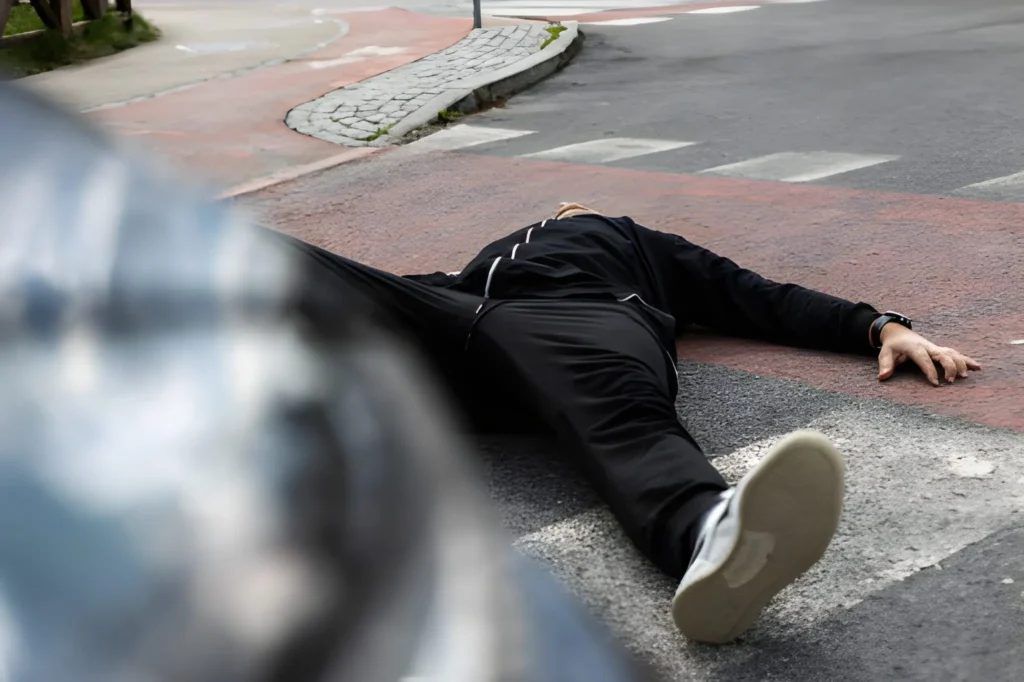A hit-and-run flips your day upside down. You’re injured, your car is damaged, and the person who caused it is gone. That leaves you to handle the crash, insurance, and medical bills while law enforcement tries to track the other driver down. The next hours and days matter more than you think.
Follow these steps immediately to protect your health, your claim, and your chance of recovering money later.
Get To Safety And Seek Medical Care
First priority: safety. Move out of traffic if the scene is dangerous, but don’t leave evidence behind unless you must for safety reasons. If anyone is seriously hurt, call emergency services immediately and get an ambulance.
Alex Begum, San Antonio Injury Lawyer at Texas Law Guns, Injury & Accident Lawyers, says, “Even if you feel okay, get checked by a medical professional as soon as possible. Adrenaline hides injuries. A prompt medical exam creates a clear timeline tying your injuries to the crash, which is essential for insurance claims and legal cases.”
Call The Police And Report The Hit-And-Run
Call 911 or your local police non-emergency number and report the crash. Tell them it was a hit-and-run and give any details you have. Request the responding officer’s name and the incident or report number before they leave.
A police report does two things: it starts the criminal investigation, and it creates an official record you’ll need for insurance. Without a report, your insurer may delay or deny coverage. Make sure the police report includes a description of the vehicle that hit you, the direction it fled, and any witness statements.
Gather As Much Evidence As You Can
The more information you collect on site, the easier it is for police and insurers to identify the responsible driver. Take photos and short videos of:
- Damage to your vehicle and other property
- Vehicle positions and skid marks
- Street signs, traffic lights, and nearby landmarks
- Time-stamped photos of injuries if visible
- The direction the fleeing car left, and any debris it left behind
As Scott Odierno, Partner of The Odierno Law Firm Accident and Injury Lawyers, says, “Write down the make, model, color, and any partial or full license plate numbers. Note the time, exact location, weather, and road conditions. If you can safely, check nearby driveways or buildings for security cameras that might have recorded the incident.”
Find And Preserve Witnesses
Witnesses are often the difference between a cold case and an arrest. Ask people nearby if they saw the crash and get their names and phone numbers. Record brief statements on your phone, or ask witnesses to write down what they observed and sign it.
If a witness refuses to give contact information in the moment, at least get a description and a quick note of what they said. Follow up with them later and ask them to speak with police.
Preserve Electronic Evidence Immediately
Dashcam footage, phone video, and CCTV are gold. If you recorded the collision or your phone captured it, back up that file to cloud storage or another device right away. Don’t delete anything. Ask the police to request footage from nearby businesses and traffic cameras because many systems overwrite old footage quickly.
If your car’s telematics saved data (time, speed, impact data), tell your insurer and attorney. Those logs help reconstruct the crash.
Notify Your Insurance Company Promptly
Call your insurer as soon as you can and report the hit-and-run. Explain that the other driver fled. Ask about hit-and-run, uninsured motorist (UM), and collision coverage.
Joel DuBoff, Maryland Hit and Run Accident Attorneys at DuBoff & Associates, puts, “Collision coverage handles vehicle repairs (minus your deductible). Uninsured motorist or hit-and-run coverage often pays for medical bills and some damages when the other driver can’t be identified. Policy language varies, so ask your agent what applies and what documentation they need.”
Be factual and concise with the insurer. Do not give a recorded statement without checking with a lawyer if your injuries are serious or there’s dispute potential.
Document Medical Treatment And Follow-Up Care
After the first medical visit, keep every record: ER notes, imaging, prescriptions, therapy visits, referrals, and receipts. Track symptoms and how they limit daily life. If you return to a doctor later with new or worsening symptoms, make sure each visit mentions the date of the accident and connects the treatment to that event.
Health insurance may pay immediate treatment, but medical records tie those bills to the crash for potential reimbursement under UM or a future civil claim.
Track All Financial Losses
Create a folder (digital or physical) for everything related to the crash. Include:
- Medical bills and receipts
- Pharmacy receipts and medical device receipts
- Repair estimates and invoices for vehicle damage
- Rental car expenses
- Proof of lost wages and missed shifts
- Receipts for out-of-pocket costs like tow fees and rides
A clean, chronological packet of records makes it easier to prove your losses to insurance adjusters and lawyers.
Beware Of Recorded Statements And Quick Settlement Offers
Adjusters sometimes push for recorded statements or early settlement offers. Don’t accept anything that doesn’t fully cover your current and likely future expenses. As Robert S. Miyashita, Honolulu, HI Car Accident Lawyers at Miyashita & O’Steen, says, “Avoid giving recorded statements about your injuries or activities without legal advice. Stick to basic facts about the crash when speaking to insurers: time, place, and that you reported it to police. If the claim grows complex or injuries are significant, consult an attorney before signing or speaking further.”
Contact A Lawyer When Injuries Are Moderate To Severe
If you face major medical bills, lost income, or permanent injury, get legal help early. A lawyer can coordinate with police, preserve evidence, negotiate with insurers, and handle complex claims like future earning loss or long-term care.
Even with minor injuries, consult an attorney if the insurer denies a UM claim or disputes liability. Early legal involvement often improves outcomes.
What To Do If The Driver Is Later Identified
If police identify the fleeing driver or surveillance reveals a plate, take these steps: share that information with your insurer and lawyer, and do not confront the person yourself. If the at-fault driver is charged criminally, that doesn’t automatically resolve your civil claim. Your attorney will advise on suing for damages or coordinating with the criminal case.
If the driver’s insurance accepts liability, your claim will likely proceed through normal insurance channels. If they’re uninsured, your UM or collision policy handles compensation subject to your policy’s limits and deductible.
Criminal Vs. Civil Paths: What To Expect
Hit-and-run is a criminal offense. Police and prosecutors may pursue charges that can lead to fines, license suspension, or jail time. Criminal prosecution can help establish guilt but does not directly compensate you for damages.
Civil claims recover money. That can be through the other driver’s insurance, your UM coverage, or a lawsuit. An arrest increases the odds of civil recovery if the driver has assets or insurance. If the driver lacks assets, a civil judgment can be hard to collect.
If You Can’t Identify The Other Driver
When the other driver remains unknown, your policy matters most. Hit-and-run and uninsured motorist coverage typically cover injuries and sometimes property damage when the at-fault driver can’t be found. Collision coverage can help repair your vehicle after you pay your deductible.
If you lack those options, check if your state offers victim compensation or hit-and-run funds. A lawyer or local victim advocate can point you to state resources if available.
Final Thoughts
A hit-and-run is chaotic and stressful, but acting methodically protects your health, your claim, and your legal options. Protect the scene, preserve evidence, document everything, and involve police and your insurer right away. If injuries or damages are substantial, bring in a lawyer who knows how to work with police, subpoena footage, and negotiate with insurers. These steps won’t erase the crash, but they give you the best chance of getting the medical care and compensation you need.
Read more: How Modern IT Solutions Drive Better Patient Outcomes in Healthcare
How Remote Administrative Support Is Reshaping Business Operations
Choosing the Right Landscape Maintenance Plan for Your Business Property



